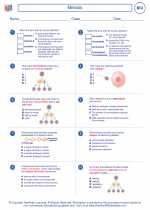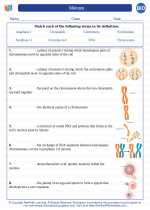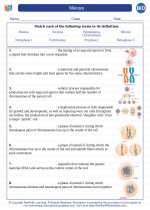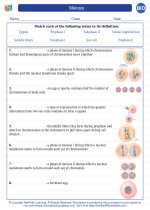Hyphae
Hyphae are the branching, thread-like structures that make up the main body of a fungus. These structures are used for the absorption of nutrients and are the building blocks of the mycelium, which is the vegetative part of a fungus.
Structure of Hyphae
The structure of hyphae consists of long, branching filaments that are typically divided by septa. These septa contain pores that allow for the flow of cytoplasm and organelles between adjacent compartments of the hyphae. In some fungi, the hyphae are coenocytic, meaning they lack septa and contain a continuous cytoplasmic mass.
Types of Hyphae
There are different types of hyphae based on their function and structure:
- Vegetative Hyphae: These hyphae are responsible for the absorption of nutrients and the growth of the fungus.
- Aerial Hyphae: These hyphae extend above the surface of the substrate and are involved in the production of reproductive structures such as spores.
- Rhizomorphs: These are specialized, rope-like hyphal structures that allow the fungus to transport nutrients over long distances.
Role of Hyphae in Fungi
Hyphae play a crucial role in the life cycle and ecological function of fungi. They are involved in:
- Nutrient Absorption: Hyphae secrete enzymes to break down organic matter and absorb nutrients from the environment.
- Reproduction: Hyphae are involved in the formation of reproductive structures, such as fruiting bodies and spores.
- Symbiotic Relationships: Fungal hyphae form symbiotic relationships with plant roots (mycorrhizae) and algae (lichens) to facilitate nutrient exchange.
- Pathogenic Interactions: Some fungi use hyphae to invade and colonize host organisms, causing diseases.
Study Guide
When studying hyphae, it's important to focus on the following key points:
- Describe the structure of hyphae and the presence or absence of septa.
- Explain the role of hyphae in nutrient absorption and the growth of the fungus.
- Identify the different types of hyphae and their specific functions.
- Discuss the ecological importance of hyphae in fungal life cycles and interactions with other organisms.
- Compare and contrast the roles of hyphae in beneficial symbiotic relationships and pathogenic interactions.
Understanding the structure and function of hyphae is essential for comprehending the biology and ecology of fungi, as well as their significance in various ecosystems.
[Hyphae] Related Worksheets and Study Guides:
.◂Biology Worksheets and Study Guides High School. Meiosis

 Worksheet/Answer key
Worksheet/Answer key
 Worksheet/Answer key
Worksheet/Answer key
 Vocabulary/Answer key
Vocabulary/Answer key
 Vocabulary/Answer key
Vocabulary/Answer key
 Vocabulary/Answer key
Vocabulary/Answer key
